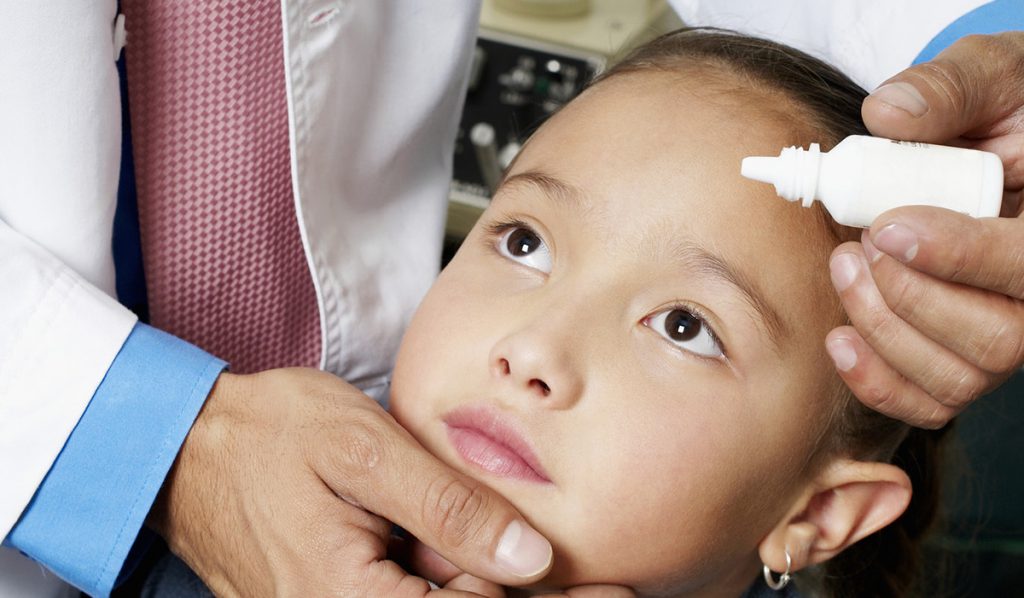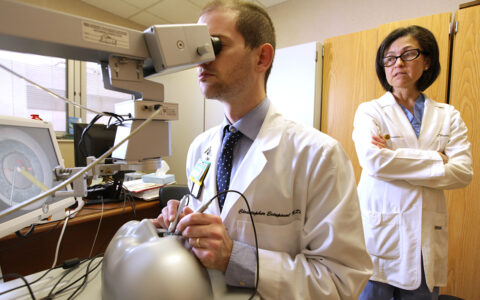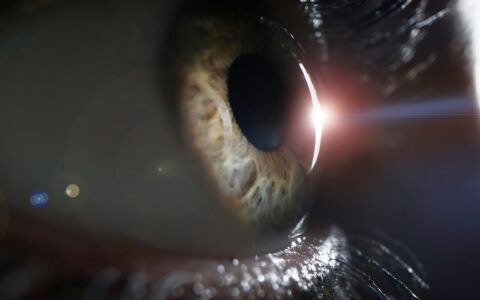The multicenter Myopia Treatment Study (MTS1) sheds new light on the pediatric use of low-dose atropine for myopia, as the results did not confirm the treatment efficacy reported in the earlier ATOM (Atropine for the Treatment of Myopia) studies.
The ATOM studies conducted in Singapore demonstrated that a lower-dose treatment was effective in slowing myopia progression with relatively few side effects. The MTS1 study, involving U.S. children, did not, said Lori Ann Kehler, O.D., division chief of optometry at Vanderbilt Eye Institute.
“Much to our surprise, our study did not have the same findings,” Kehler said.
The two-and-a-half-year MTS1 trial was conducted by the Pediatric Eye Disease Investigator Group and funded by the National Eye Institute. Results were published in JAMA Ophthalmology.
“Negative findings, while sometimes disappointing, can be as important or possibly more important than positive findings,” Kehler added. “Some parents have been paying for this drop out of pocket, so it’s important to discuss these results with them.”
Pediatric ophthalmologists and optometrists have been prescribing the lower-dose eye drops off label to slow myopia progression since at least 2017, when the American Academy of Ophthalmology found sufficient level 1 evidence for their effectiveness.
“Myopia is such a common and important problem around the world,” said David K. Wallace, M.D., M.P.H., chair of ophthalmology and visual sciences at Vanderbilt University Medical Center. “This well-designed randomized clinical trial has moved us forward significantly in understanding the effect of treatments designed to slow myopia progression.”
Engaged Study Participation
Atropine 1 percent, an antimuscarinic eye drop, had previously been shown to be effective in slowing myopia progression – but not without adverse effects like blurred vision and light sensitivity. In the ATOM studies, researchers studied three reduced doses, and 0.01% and got positive results with fewer complications.
“The ATOM studies demonstrated that lower-dose atropine (0.01 percent) slowed myopia progression and caused few to no side effects,” Kehler said. “It was an unexpected result that gave us a lot of enthusiasm for its success as a treatment option.”
The subsequent MTS1 trial tested the efficacy of daily low-dose atropine eyedrops (0.01%) in 187 children aged 5 to 12 years with myopia. Two in three participants were randomized to receive daily atropine drops and one in three received placebo for 24 months, followed by six months with no treatment.
“We had some incredibly dedicated families in this study,” Kehler said. “This was during the COVID lockdown and still only 5 percent of kids dropped out of the study.”
Neither immediately following the treatment period nor six months after treatment concluded were significant differences found between the groups regarding changes in myopia progression compared with baseline. Additionally, there were no significant differences in axial length between the two groups when compared with baseline measurements.
Untangling the Results
The U.S.-based study compared with the Asian study may reflect racial differences in atropine response, the authors noted. MTS1 enrolled fewer Asian children, whose myopia is known to progress more quickly, and included Black children, whose myopia progresses less quickly compared with those from other genetic backgrounds.
A different concentration of atropine may be needed for U.S. children to experience a benefit, based on environmental, genetic, or structural factors, the researchers concluded.
In the LAMP trial (Low-concentration Atropine for Myopia Progression), investigators in Hong Kong have identified that 0.05% atropine may be the optimal concentration for treatment.
“While the full results of this study are not yet available, early data open the possibility of using slightly stronger doses of atropine,” Kehler said.
One Tool in the Toolbox
Atropine drops for myopia are just part of an ongoing effort to advance myopia treatment. The CHAPERONE trial is testing two different strengths (0.01 percent and 0.1 percent) of MicroPine, a proprietary micro dose formulation of atropine delivered as an eye mist.
Kehler says another promising option may be spectacle lenses that are designed to slow myopia progression, though these lenses are not yet available in the U.S. . Red-light therapy, where the eyes are exposed to low-level red light for a few minutes each day, is also being studied in the U.S. and Asia.
“Atropine is not a cure for myopia,” Kehler cautioned. “It could be that if we combine these emerging therapies with the optimal dose of atropine, we might have a greater sum-total effect.”







